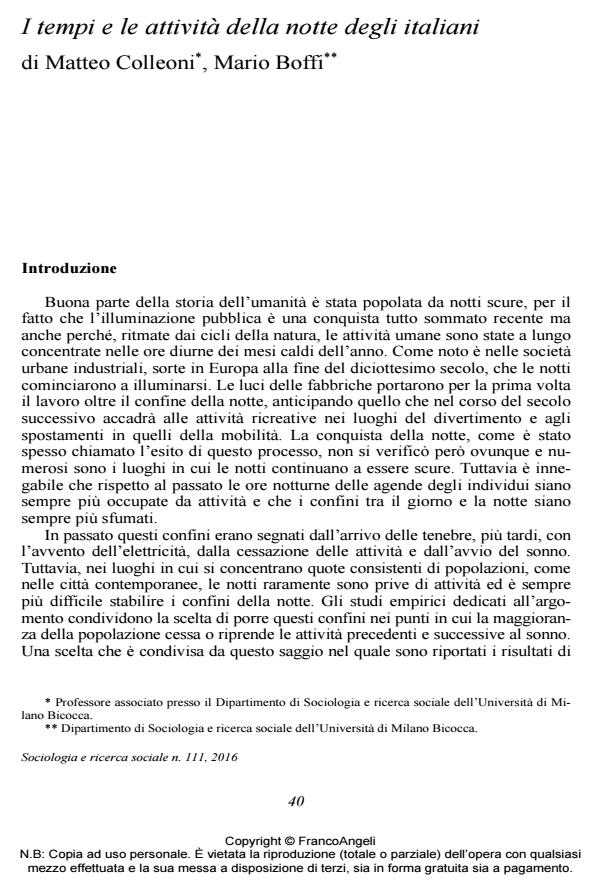I tempi e le attività della notte degli italiani
Titolo Rivista SOCIOLOGIA E RICERCA SOCIALE
Autori/Curatori Matteo Colleoni, Mario Boffi
Anno di pubblicazione 2016 Fascicolo 2016/111
Lingua Italiano Numero pagine 16 P. 40-55 Dimensione file 372 KB
DOI 10.3280/SR2016-111003
Il DOI è il codice a barre della proprietà intellettuale: per saperne di più
clicca qui
Qui sotto puoi vedere in anteprima la prima pagina di questo articolo.
Se questo articolo ti interessa, lo puoi acquistare (e scaricare in formato pdf) seguendo le facili indicazioni per acquistare il download credit. Acquista Download Credits per scaricare questo Articolo in formato PDF

FrancoAngeli è membro della Publishers International Linking Association, Inc (PILA)associazione indipendente e non profit per facilitare (attraverso i servizi tecnologici implementati da CrossRef.org) l’accesso degli studiosi ai contenuti digitali nelle pubblicazioni professionali e scientifiche
This paper presents the results of a secondary data analysis of the latest survey, conducted during the period 2008-2009 by the National Italian Institute for Statistics (Istat) in Italy, on how time is used. It aims to analyze how night-time hours are used by the Italian population, with attention to the duration and temporal sequence of the activities undertaken. Specifically, it intends to answer questions regarding identification of when night begins and ends and to provide an analysis of the density and temporal sequences of daytime activities
- La differenziazione delle identità dei luoghi e dei consumi nella città verticale. Spunti dai casi di CityLife e Garibaldi a Milano Federico Smania, Luca Daconto, in SOCIOLOGIA URBANA E RURALE 132/2023 pp.113
DOI: 10.3280/SUR2023-132006
Matteo Colleoni, Mario Boffi, I tempi e le attività della notte degli italiani in "SOCIOLOGIA E RICERCA SOCIALE " 111/2016, pp 40-55, DOI: 10.3280/SR2016-111003